‹ Back to the homepage About Kadaza Tips
Collaboration Tools
November 22, 2021

The Best Tools for Online Collaboration
However, with growth comes saturation; there are now dozens if not hundreds of collaboration tools. In this article, we’ll provide a general overview of some of the biggest players in the online collaboration space as well as help you decide which one may be right for your company or group.
Kadaza is reader-supported. When you buy through links on our site, we may earn an affiliate commission.
1. What Are Collaboration Tools and Why Do You Need Them?
2. Online Communications Tools
3. Tools to Manage Projects and Tasks
What Are Collaboration Tools and Why Do You Need Them?
Collaboration is a necessary and often beneficial aspect of most workplaces. Be it a team of developers trying to build a successful application or a group of creatives generating ideas for a brand launch, collaboration can make projects more efficient and improve outcomes.
However, when there is no good communication or coordination amongst members, things can quickly turn to chaos. Deadlines can be missed, errors can be made, and other mishaps can cause losses of time and energy.
That’s why collaboration tools have become so popular, especially in large companies or those with a lot of projects and remote workers. A collaboration tool is any software application that allows 2 or more people to communicate and/or work on the same project files together. These tools usually have a way to leave notes or comments as well as track progress; approvals can also be integrated into the process so it can be monitored by supervisors. Other popular features include calendaring for syncing meetings or appointments and document editing.
If you are working on a project that involves more than one person, chances are you will benefit from some kind of collaboration tool. (However, as mentioned below, some of these tools may be great for solo projects as well.)
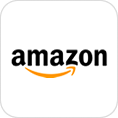 The right collaboration tools can help you help you work together more efficiently as a team. Want to learn more about collaboration and effective teamwork? Browse Amazon for the best educational and management books on collaboration, teamwork and more. Ad
The right collaboration tools can help you help you work together more efficiently as a team. Want to learn more about collaboration and effective teamwork? Browse Amazon for the best educational and management books on collaboration, teamwork and more. Ad
Online Communications Tools
First things first: when starting a project, you need a space where you can discuss it. Here are a few of the top choices for communications apps, which offer common features like chat, video/audio, and file sharing; we’ve also noted features that set them apart from each other.
One of the most popular, as well as the easiest to use is Slack. Think of it like a messaging service on steroids. It’s as easy to use as SMS but can do so much more. You can send direct messages to team members or to special #Channels; impromptu meetings can be created with “huddles.” Video and/or audio calls can be initiated with a click. All messages are archived for transparency and accountability. Companies and employees like Slack for its mix of business and pleasure; you can create #Channels for important company news as well as a place where everyone can share #catpics.
Cool unique feature: You can schedule Slack messages so you don’t bother someone at 3am or use them as a friendly reminder when a deadline is approaching.
If you’ve been working during the pandemic, chances are you’ve been invited to a Zoom meeting. Because of its ease of use, it has quickly leapfrogged to the top of the pack. Mac or PC, Android or iOS, app or web, Zoom doesn’t care. It will connect you and your camera/microphone to a meeting with nary a hiccup. Zoom even adjusts resolution according to bandwidth without grinding the meeting to a halt. It’s for these reasons and more everyone from HR professionals to theater companies love it. Cool unique feature: Forgot to shave or look like death warmed over? Turn on the Touch Up My Appearance in video settings.
One of the early players in the game, Webex was founded in 1995 and acquired by Cisco in 2007. As such, they have been focused on enterprise organizations that already use their hardware. Webex is a true end-to-end system and these large companies like it for its strong security features and excellent customer service. Now Webex is attempting to rebrand itself to a younger, hipper influencer crowd.
Cool unique feature: Recently they unveiled Webex Hologram, which promises to let meeting attendees interact in a real-time 3D environment.
Tools to Manage Projects and Tasks
One of the most popular types of collaboration tools is project management (PM) software. These are usually cloud-based applications that serve many purposes such as file storage and creating task assignments as well as commenting threads; these can help project managers track progress as well as get a good overview of the job’s progress. Since many of them offer similar features, this list will concentrate on those things that make them unique.
Asana lets you create simple to-do lists or organize enterprise-scale projects. Unique features include auto-promotion of tasks to help you prioritize easier, hidden teams for sensitive information, and don’t forget to turn on the flying unicorns in the Hacks tab so you can be rewarded when you’ve completed a task.
Basecamp promotes itself as PM software for remote work and workers and boasts over 3 million users. Features that set it apart are its campfire chatroom, which allows for real-time discussion in a less formal space, and Hill charts, which can help you quickly assess if you’ve gotten over the hump.
Monday is praised for its visualizations and ease of use. A popular unique feature is the ability to add freelancers or third parties to tasks. Companies also like that it has an open API so they can add their own integrations.
Podio separates itself from the pack by being completely customizable. Businesses can create their own apps from scratch or use ones created by others. Once added to a workspace, these apps can reference each other’s data, thereby saving time re-inputting information.
One of the features that many project managers love about Wrike is the ability to create tasks and projects with people via email. Wrike’s Intelligent Email will create a shared space and allow members to chat and exchange documents easily. It will also automatically remind users about approaching deadlines.
For anyone who is familiar with Excel, Smartsheet will be extremely easy to work with. However, it can do so much more than your typical spreadsheet, which is why it’s good for mid-to-large corporations and their projects.
Tasks are a fundamental feature of nearly every PM software program; however, creating them from scratch is a huge pain. Teamwork includes a feature to let you create task list templates that can be easily activated and applied to new jobs. Online content creators NeoMam Studios explain how they use it to manage over 40 projects.
One of Trello’s biggest stand-out features is its use of boards for projects and cards for tasks and/or greater detail. One cool trick is you can add GIFs to your cards to get people’s attention and perhaps add a little fun. On the more serious side, Trello’s UI can easily be adapted to Agile or Scrum methodology.
Project management is just one piece of the Zoho pie: the company has a whole suite of integrated software products Called Zoho One that cover all aspects of business. This includes Projects, Invoice, Mail, Docs, Chat, and CRM which can all work together in harmony.
Software developers favor Altlassian’s Jira for agile projects. Little-known features include workflow triggers to automatically advance issues and the Release Hub to quickly check a release’s status.
Airtable is like adding a GUI to your SQL database allowing for truly dynamic spreadsheets. One cool feature is view, which lets you visualize the tables in all sorts of ways, including calendars, image galleries, kanban boards, and Gantt charts.
Formerly G Suite, Google Workspace is the company’s cornerstone collaboration tool. It features many apps you are likely familiar with like Docs, Sheets, and Hangouts but puts them in one space, eliminating the need to switch between interfaces. It’s a good choice since you or your team are probably using some of these already.
Visual Collaboration Tools
Some jobs (and people) are more visually-oriented, and for those there are visual collaboration tools, usually centered around the ability to draw and write in a shared space.
Miro, appropriately named after Spanish abstract artist Joan Miró, this tool is like an infinite, intuitive whiteboard that lets you imagine projects any way you see fit. This is useful not only for creative teams but also great for solo projects.
Mural is another popular option known for its very user-friendly interface. Handy tools include anonymous voting and the ability to click and drag multiple post-it notes, something that other apps lack.
Create and Share Files or Documents Together
Sometimes all you need is to be able to exchange and comment on files or documents. For these types of projects, a file storage/sharing platform is a good choice.
Two of the top contenders have the word “box,” and that’s not their only similarity; both allow for the uploading, storing, and sharing of files of almost any size. Both integrate with nearly every PM software tool on our list and have the ability to add notes or tasks. Dropbox has a slight advantage in having block-level sync, which is faster because it only uploads the changed parts of a file. On the other hand, Box offers unlimited storage which may save you money in the long term.
WeTransfer is absolutely the simplest way to send and share large files and photos. You can share large files up to 2GB for free. WeTransfer is not only very simple to use, but it is also pleasing to the eye with beautiful backgrounds and photos. They also donate a portion of their revenue to artists.
Unclutter Your Life and Mind With ToDoist
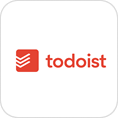 Another type of project management software centers around the creation of to-do lists. However, these are much more robust than the pad of paper that’s tacked to the fridge. To-do list programs can add reminders as well as or prioritize tasks.
Another type of project management software centers around the creation of to-do lists. However, these are much more robust than the pad of paper that’s tacked to the fridge. To-do list programs can add reminders as well as or prioritize tasks.
At the top of the heap is Todoist which sells itself as a way to take control of your life and lead a more peaceful existence (their name is a play on Taoist). Cool features include a copy and paste text function that automatically turns text into tasks and the ability to create subtasks and sections wherever you want. Unique to Todoist is the ability to customize swipes on your smartphone to execute certain functions, which can be handy at lunchtime with a hoagie in your hand.
How to find the Right Management Software for Your Team
As you can see, when it comes to project management software there are plenty of choices, each with a unique twist. So, now that you have a general idea, it’s time to do a little more due diligence.
First, you might want to look for PM tools specific to or favorited by your industry. Next, you might want to make a list of the problems you are trying to solve. Once you get a shortlist of PM software choices, you can compare them to your problem list as well as each other.
Many of these companies offer free trials or limited functionality on the software. You might want to take each for a “test drive” with a few small teams and projects. Afterwards, you can get feedback about which ones they liked.




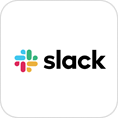
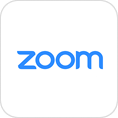
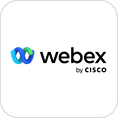
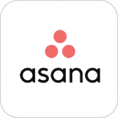
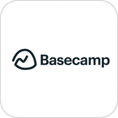
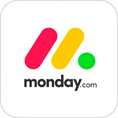
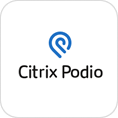
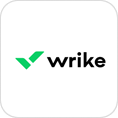

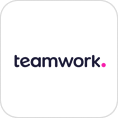
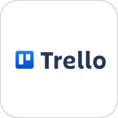

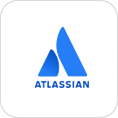
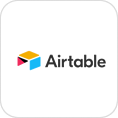

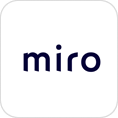

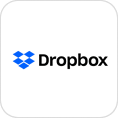
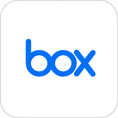
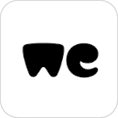





 .
.